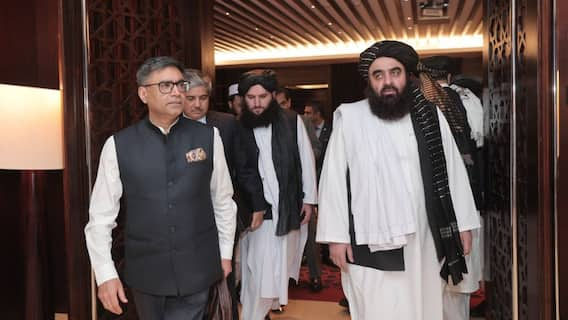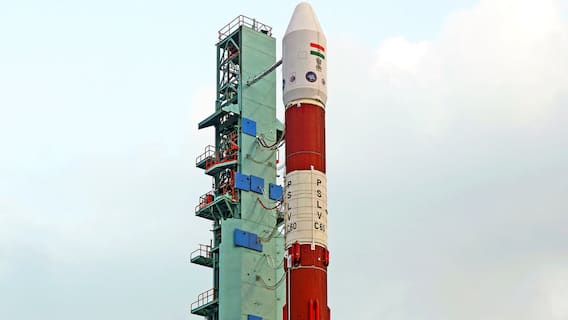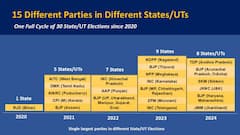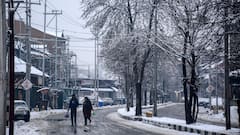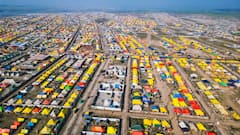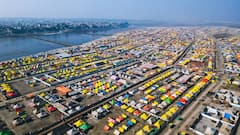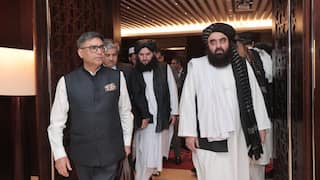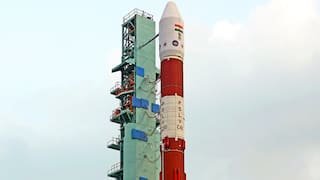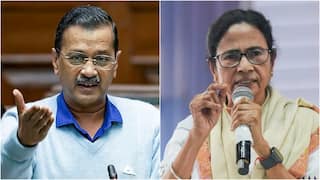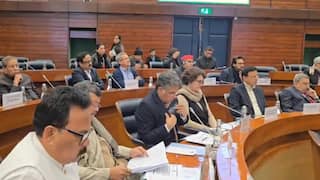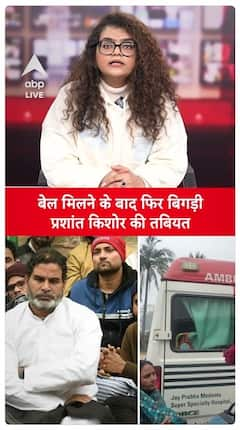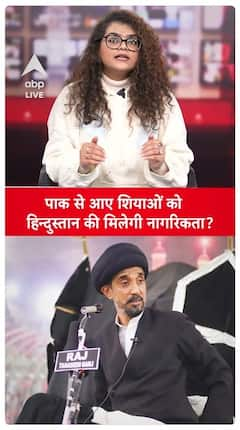Explorer
Advertisement
India And Covid-19: The Urgent Need For A Surgical Strike
What must India do to brace itself for the inevitable impact of the tornado called Covid-19? A view from the trenches by Dr Ravindra Mehta on the current gap between policy proclamation and operational delivery.

A man getting his Temperature checked at Kalyan Railway station during the corona pandemic. (Getty Images)
‘Time is life, delay is death.’ India is on the cusp of realizing the truth in those words. As Covid-19 spreads rapidly across the world and India, the spread presents a never-seen-before event in the history of mankind. The velocity of the spread, its impact and the constant stream of distressing information on the pandemic has created panic. And while healthcare systems across the world are being brought down to their knees, the general feeling is that Social Distancing (SD) will stop the virus in its track. But evidence points to the fact that SD, in India may not produce the results we wish for.
Information is a great weapon, widely disseminated by social media. But not when it overloads the system and results in paralysis or when it is unevenly distributed. At the moment, the educated understand SD (how much they will adhere to it is a question) but the uneducated and poor socio-economic class are unable to grasp the importance of SD. This is why we need to go well beyond SD, a measure which slows down the pandemic and buys time to prepare for the next potential onslaught.
The SD panacea may not work on its own. The advice coming from China, Italy and other areas, duly processed and packaged by epidemiologists and data-scientists, has led to authorities prepare for the ‘worst possible situation.' Moving rapidly, they have instituted a level of prevention we have never seen earlier in healthcare. Bear in mind that India is a country where primary care and preventive medicine has always been inadequate. Paradoxically, we have, in the largest preventive move ever seen, marshalled extensive social and system measures to prevent the spread of this disease, before ‘the horse has left the barn.’ Amidst this urgency, ground-level issues to tackle the impending crisis of those who get the disease are inadequate. The gap between policy proclamation and operational delivery is vast. Let’s look at the ground reality before arriving at the solution:
1. Social distancing (SD)
Doubtful adherence: SD will go down as the ‘phrase of the decade’ as tabloid after tabloid, and news television programs expound on it when we aren’t sure about the extent of SD which is needed to create the desired effect. What is the threshold that humans have to be kept away from humans, to actually nip spread in the bud? Is shutting down schools, offices and malls enough? If you walk around, you will see that masses of people continue to mingle at an uncomfortably close level - children in play grounds, guests at weddings, the poor fleeing cities to their homes at railway stations. SD is impossible to implement in the poor socio-economic strata where masks, sanitizers, and any duration of isolation is a pipe dream, and proximity is a way of existence. This is something we are not talking about. The system must account for this or the next wave will consume the hapless poor. SD has never been seen in this country earlier, underscoring the need for a clarion call for extensive public cooperation or radical enforcement as done in other parts of the world.
Uncertain duration: The other question that no one can answer is “What is the duration for which SD needs to be marinated?” The answer to this question changes based on the information of spread coming daily, which is a function of how successfully SD was done. Here a circle is set where successfully done SD will curtail disease duration and half-heartedly done SD will come with all the uncertainties and no endpoint. Clearly, at this point, India is winging it with SD.
Poor track record of controlling disease: Covid-19 came with the claim to fame of an uncommon ‘animal-to-human’ infection and was rapidly promoted to ‘human-to-human’ transmission. Now, there is some evidence to show that the elderly and those with chronic diseases are most impacted, but the spread in various socio-economic strata does not appear to be clearly defined. In India, this is our nightmare with similar terrors such as TB, malaria and dengue being marginally controlled at best. We do not have a great track record of controlling infectious diseases.
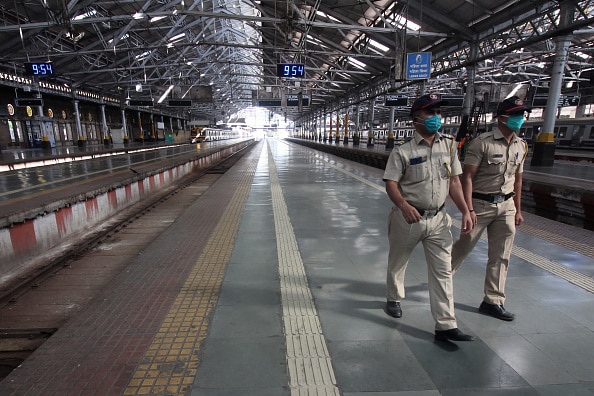 2. Testing
Missing out on valuable data: It is essential to understand the true denominator of a disease. This understanding helps create measures to fight it. As this is a ‘novel’ virus, we do not have enough kits in the country (or anywhere in the world) to find the true denominator. This has led to many practical approaches adopted by various countries. In a 1.3 billion population such as ours, a policy of ‘limited utilitarian testing’ has been recommended, which is changing as we speak. The disadvantage of the policy thus far is that we are not only undermining the information we need to truly define this pandemic’s penetration and nature in our country, but also isolating people who may not have disease. On the other hand, the social impact of the higher incidence revealed by extensive testing can fuel unrest and anxiety. We have to be ready to handle the level of panic this can unleash.
3. Tools
Guidelines: Guideline, guidelines and more guidelines are available, with the challenge of implementation – here lies the challenge.
Ill-defined healthcare system: We have a very heterogeneous and ill-defined healthcare system that varies in infrastructure, skills, and economic strength. Nursing homes, small hospitals, government hospitals and corporate hospitals are very dissimilar in their services and quality, a major factor impeding planning in a pandemic such as this.
Task requirements: We need a never-seen-before effort to marshal and coordinate resources – a process where measures are recommended, implemented, audited and modified with a 24/7 push, with efficiency at the level of SWAT teams.
Care of the sick inpatient: This is the weakest link. Infrastructure, healthcare personnel (doctors, nurses and supportive staff) and personal protective equipment (PPE) are the three pillars of management in the inpatient setting. If we reach the stage for massive deployment of healthcare, there is negligible isolation infrastructure, no obvious healthcare personnel plan for deployment and attrition, and scarce PPE available. Healthcare professionals and PPE are the holy grail of medical management. An intact healthcare community is imperative to tackling the crisis and without PPE this is an impossible task. In addition, there is a shortage of healthcare personnel. We have been reeling under a nursing crisis for years. You cannot easily get personnel back if they get infected, and you also cannot send infected health professionals back to their families as they will infect them and perpetuate the community cycle. An adequate supply of PPE is the foundation for defeating the virus.
What are the measures we need to take to get the PPE train in order and have Covid-19 centers who can deliver safe and quality services? Radical measures include both ramping up PPE production and supply like never before, ensuring that it reaches hospitals and healthcare and not people’s homes or illegal hoarding areas. Covid-19 centers due to the need for trained healthcare personnel, PPE and high infectivity are more challenging than running even the best of hospitals. At the moment, we are witnessing fragmented and limited efforts in all areas. Here is what is necessary:
2. Testing
Missing out on valuable data: It is essential to understand the true denominator of a disease. This understanding helps create measures to fight it. As this is a ‘novel’ virus, we do not have enough kits in the country (or anywhere in the world) to find the true denominator. This has led to many practical approaches adopted by various countries. In a 1.3 billion population such as ours, a policy of ‘limited utilitarian testing’ has been recommended, which is changing as we speak. The disadvantage of the policy thus far is that we are not only undermining the information we need to truly define this pandemic’s penetration and nature in our country, but also isolating people who may not have disease. On the other hand, the social impact of the higher incidence revealed by extensive testing can fuel unrest and anxiety. We have to be ready to handle the level of panic this can unleash.
3. Tools
Guidelines: Guideline, guidelines and more guidelines are available, with the challenge of implementation – here lies the challenge.
Ill-defined healthcare system: We have a very heterogeneous and ill-defined healthcare system that varies in infrastructure, skills, and economic strength. Nursing homes, small hospitals, government hospitals and corporate hospitals are very dissimilar in their services and quality, a major factor impeding planning in a pandemic such as this.
Task requirements: We need a never-seen-before effort to marshal and coordinate resources – a process where measures are recommended, implemented, audited and modified with a 24/7 push, with efficiency at the level of SWAT teams.
Care of the sick inpatient: This is the weakest link. Infrastructure, healthcare personnel (doctors, nurses and supportive staff) and personal protective equipment (PPE) are the three pillars of management in the inpatient setting. If we reach the stage for massive deployment of healthcare, there is negligible isolation infrastructure, no obvious healthcare personnel plan for deployment and attrition, and scarce PPE available. Healthcare professionals and PPE are the holy grail of medical management. An intact healthcare community is imperative to tackling the crisis and without PPE this is an impossible task. In addition, there is a shortage of healthcare personnel. We have been reeling under a nursing crisis for years. You cannot easily get personnel back if they get infected, and you also cannot send infected health professionals back to their families as they will infect them and perpetuate the community cycle. An adequate supply of PPE is the foundation for defeating the virus.
What are the measures we need to take to get the PPE train in order and have Covid-19 centers who can deliver safe and quality services? Radical measures include both ramping up PPE production and supply like never before, ensuring that it reaches hospitals and healthcare and not people’s homes or illegal hoarding areas. Covid-19 centers due to the need for trained healthcare personnel, PPE and high infectivity are more challenging than running even the best of hospitals. At the moment, we are witnessing fragmented and limited efforts in all areas. Here is what is necessary:
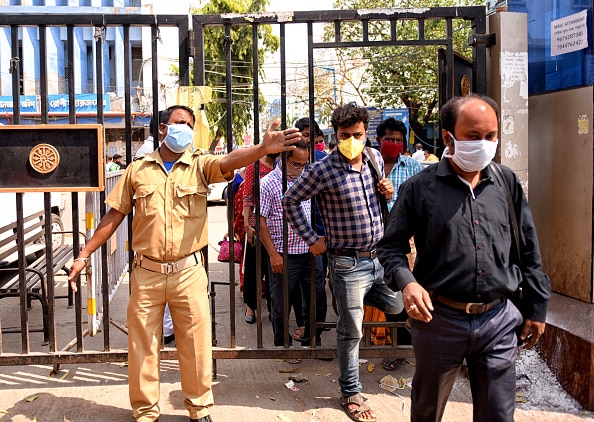 4. Uncomfortable truths
There are several uncomfortable truths that need to be tabled and discussed. Our hospitals, especially government hospitals with high volumes and overcrowding are poorly equipped to handle a highly virulent strain such as Covid-19. There is no clear voice addressing this. Are we convinced that our public hospitals can handle the stress of the pandemic effectively? Private hospitals are trying to prepare on their own, but most are reeling under budgetary constraints and are not being able to move rapidly as the situation mandates.
There are problems related to dealing with vendors in such a crisis for essential equipment such as PPEs, and needs an overseeing authority to step-in. The manufacturing and distribution system are overwhelmed with a hitherto unprecedented demand, and our hospitals are currently not equipped to accept a deluge of sick Covid-19 patients.
We need a centrally organized committee that cascades into state and cities to take stock of the situation, identify and earmark Covid-19 places with ‘high quality’ care, and put all resources there: administrators/clinicians, training, PPEs so we have these comprehensive well-equipped Covid-19 ready facilities. China created once such center in one week to mitigate their crisis. Do we have the capability?
There is an urgent need to create an ombudsman for Covid-19 preparations. This is the ‘Covid-19 General of India,’ who leads the ‘surgical strike’ against the coronavirus with 24/7 planning and implementation. The ombudsman is totally empowered and supported by the government and people alike, with no vested interests, rule deviations, and dynamically adjusting as the situation changes daily.
The rich and the poor, the powerful and the weak, the famous and the nameless are all at equal risk. We need to put the right measures in place with sincerity and military-level precision. It is important to understand that SD will buy us time. Avoiding the harshest consequences to human life will take more than SD – we cannot afford to lose this window for emergent action.
4. Uncomfortable truths
There are several uncomfortable truths that need to be tabled and discussed. Our hospitals, especially government hospitals with high volumes and overcrowding are poorly equipped to handle a highly virulent strain such as Covid-19. There is no clear voice addressing this. Are we convinced that our public hospitals can handle the stress of the pandemic effectively? Private hospitals are trying to prepare on their own, but most are reeling under budgetary constraints and are not being able to move rapidly as the situation mandates.
There are problems related to dealing with vendors in such a crisis for essential equipment such as PPEs, and needs an overseeing authority to step-in. The manufacturing and distribution system are overwhelmed with a hitherto unprecedented demand, and our hospitals are currently not equipped to accept a deluge of sick Covid-19 patients.
We need a centrally organized committee that cascades into state and cities to take stock of the situation, identify and earmark Covid-19 places with ‘high quality’ care, and put all resources there: administrators/clinicians, training, PPEs so we have these comprehensive well-equipped Covid-19 ready facilities. China created once such center in one week to mitigate their crisis. Do we have the capability?
There is an urgent need to create an ombudsman for Covid-19 preparations. This is the ‘Covid-19 General of India,’ who leads the ‘surgical strike’ against the coronavirus with 24/7 planning and implementation. The ombudsman is totally empowered and supported by the government and people alike, with no vested interests, rule deviations, and dynamically adjusting as the situation changes daily.
The rich and the poor, the powerful and the weak, the famous and the nameless are all at equal risk. We need to put the right measures in place with sincerity and military-level precision. It is important to understand that SD will buy us time. Avoiding the harshest consequences to human life will take more than SD – we cannot afford to lose this window for emergent action.
 About the author: Dr Ravindra M. Mehta is the Chief of Pulmonary and Critical Care Medicine at Apollo Hospitals Bangalore. He is an established clinician, researcher, and a teacher in the field of Pulmonology (Respiratory/Chest Medicine), Critical care (Intensive Care) and Sleep Disorders Medicine. Dr Mehta has extensive academic training and professional experience in India and the USA.
About the author: Dr Ravindra M. Mehta is the Chief of Pulmonary and Critical Care Medicine at Apollo Hospitals Bangalore. He is an established clinician, researcher, and a teacher in the field of Pulmonology (Respiratory/Chest Medicine), Critical care (Intensive Care) and Sleep Disorders Medicine. Dr Mehta has extensive academic training and professional experience in India and the USA.
 2. Testing
Missing out on valuable data: It is essential to understand the true denominator of a disease. This understanding helps create measures to fight it. As this is a ‘novel’ virus, we do not have enough kits in the country (or anywhere in the world) to find the true denominator. This has led to many practical approaches adopted by various countries. In a 1.3 billion population such as ours, a policy of ‘limited utilitarian testing’ has been recommended, which is changing as we speak. The disadvantage of the policy thus far is that we are not only undermining the information we need to truly define this pandemic’s penetration and nature in our country, but also isolating people who may not have disease. On the other hand, the social impact of the higher incidence revealed by extensive testing can fuel unrest and anxiety. We have to be ready to handle the level of panic this can unleash.
3. Tools
Guidelines: Guideline, guidelines and more guidelines are available, with the challenge of implementation – here lies the challenge.
Ill-defined healthcare system: We have a very heterogeneous and ill-defined healthcare system that varies in infrastructure, skills, and economic strength. Nursing homes, small hospitals, government hospitals and corporate hospitals are very dissimilar in their services and quality, a major factor impeding planning in a pandemic such as this.
Task requirements: We need a never-seen-before effort to marshal and coordinate resources – a process where measures are recommended, implemented, audited and modified with a 24/7 push, with efficiency at the level of SWAT teams.
Care of the sick inpatient: This is the weakest link. Infrastructure, healthcare personnel (doctors, nurses and supportive staff) and personal protective equipment (PPE) are the three pillars of management in the inpatient setting. If we reach the stage for massive deployment of healthcare, there is negligible isolation infrastructure, no obvious healthcare personnel plan for deployment and attrition, and scarce PPE available. Healthcare professionals and PPE are the holy grail of medical management. An intact healthcare community is imperative to tackling the crisis and without PPE this is an impossible task. In addition, there is a shortage of healthcare personnel. We have been reeling under a nursing crisis for years. You cannot easily get personnel back if they get infected, and you also cannot send infected health professionals back to their families as they will infect them and perpetuate the community cycle. An adequate supply of PPE is the foundation for defeating the virus.
What are the measures we need to take to get the PPE train in order and have Covid-19 centers who can deliver safe and quality services? Radical measures include both ramping up PPE production and supply like never before, ensuring that it reaches hospitals and healthcare and not people’s homes or illegal hoarding areas. Covid-19 centers due to the need for trained healthcare personnel, PPE and high infectivity are more challenging than running even the best of hospitals. At the moment, we are witnessing fragmented and limited efforts in all areas. Here is what is necessary:
2. Testing
Missing out on valuable data: It is essential to understand the true denominator of a disease. This understanding helps create measures to fight it. As this is a ‘novel’ virus, we do not have enough kits in the country (or anywhere in the world) to find the true denominator. This has led to many practical approaches adopted by various countries. In a 1.3 billion population such as ours, a policy of ‘limited utilitarian testing’ has been recommended, which is changing as we speak. The disadvantage of the policy thus far is that we are not only undermining the information we need to truly define this pandemic’s penetration and nature in our country, but also isolating people who may not have disease. On the other hand, the social impact of the higher incidence revealed by extensive testing can fuel unrest and anxiety. We have to be ready to handle the level of panic this can unleash.
3. Tools
Guidelines: Guideline, guidelines and more guidelines are available, with the challenge of implementation – here lies the challenge.
Ill-defined healthcare system: We have a very heterogeneous and ill-defined healthcare system that varies in infrastructure, skills, and economic strength. Nursing homes, small hospitals, government hospitals and corporate hospitals are very dissimilar in their services and quality, a major factor impeding planning in a pandemic such as this.
Task requirements: We need a never-seen-before effort to marshal and coordinate resources – a process where measures are recommended, implemented, audited and modified with a 24/7 push, with efficiency at the level of SWAT teams.
Care of the sick inpatient: This is the weakest link. Infrastructure, healthcare personnel (doctors, nurses and supportive staff) and personal protective equipment (PPE) are the three pillars of management in the inpatient setting. If we reach the stage for massive deployment of healthcare, there is negligible isolation infrastructure, no obvious healthcare personnel plan for deployment and attrition, and scarce PPE available. Healthcare professionals and PPE are the holy grail of medical management. An intact healthcare community is imperative to tackling the crisis and without PPE this is an impossible task. In addition, there is a shortage of healthcare personnel. We have been reeling under a nursing crisis for years. You cannot easily get personnel back if they get infected, and you also cannot send infected health professionals back to their families as they will infect them and perpetuate the community cycle. An adequate supply of PPE is the foundation for defeating the virus.
What are the measures we need to take to get the PPE train in order and have Covid-19 centers who can deliver safe and quality services? Radical measures include both ramping up PPE production and supply like never before, ensuring that it reaches hospitals and healthcare and not people’s homes or illegal hoarding areas. Covid-19 centers due to the need for trained healthcare personnel, PPE and high infectivity are more challenging than running even the best of hospitals. At the moment, we are witnessing fragmented and limited efforts in all areas. Here is what is necessary:
- A central PPE distribution system with military precision and implementation to ensure there is no waste, willful or inadvertent.
- An emergency PPE law enacted for production, distribution and utilization. This must be one of the most stringent laws ever seen.
- As drugs and vaccines develop for this infection, a similar strategy needs to be followed to ensure they get to those who actually need it.
- Covid-19 centers must be audited and approved by an external team of experts to ensure no short-cuts for personnel/PPE have been taken. If this is not implemented, these centers will also spread the disease and take valuable unprotected healthcare workers out of the workforce. The so-called current isolation beds are an eyewash if they cannot last at least for a month with adequate personnel/PPE.
- Covid-19 centers training and planning: Judicious but non-compromising use of all resources to plan for the long haul, as the epidemic may stretch for weeks as in other countries – we are seeing burn-out in Covid-19 facilities worldwide.
- Non-Covid-19 care: The system has to allow patients with non-Covid-19 issues to be taken care of without risk of cross-infectivity, needing separate facilities or zones.
 4. Uncomfortable truths
There are several uncomfortable truths that need to be tabled and discussed. Our hospitals, especially government hospitals with high volumes and overcrowding are poorly equipped to handle a highly virulent strain such as Covid-19. There is no clear voice addressing this. Are we convinced that our public hospitals can handle the stress of the pandemic effectively? Private hospitals are trying to prepare on their own, but most are reeling under budgetary constraints and are not being able to move rapidly as the situation mandates.
There are problems related to dealing with vendors in such a crisis for essential equipment such as PPEs, and needs an overseeing authority to step-in. The manufacturing and distribution system are overwhelmed with a hitherto unprecedented demand, and our hospitals are currently not equipped to accept a deluge of sick Covid-19 patients.
We need a centrally organized committee that cascades into state and cities to take stock of the situation, identify and earmark Covid-19 places with ‘high quality’ care, and put all resources there: administrators/clinicians, training, PPEs so we have these comprehensive well-equipped Covid-19 ready facilities. China created once such center in one week to mitigate their crisis. Do we have the capability?
There is an urgent need to create an ombudsman for Covid-19 preparations. This is the ‘Covid-19 General of India,’ who leads the ‘surgical strike’ against the coronavirus with 24/7 planning and implementation. The ombudsman is totally empowered and supported by the government and people alike, with no vested interests, rule deviations, and dynamically adjusting as the situation changes daily.
The rich and the poor, the powerful and the weak, the famous and the nameless are all at equal risk. We need to put the right measures in place with sincerity and military-level precision. It is important to understand that SD will buy us time. Avoiding the harshest consequences to human life will take more than SD – we cannot afford to lose this window for emergent action.
4. Uncomfortable truths
There are several uncomfortable truths that need to be tabled and discussed. Our hospitals, especially government hospitals with high volumes and overcrowding are poorly equipped to handle a highly virulent strain such as Covid-19. There is no clear voice addressing this. Are we convinced that our public hospitals can handle the stress of the pandemic effectively? Private hospitals are trying to prepare on their own, but most are reeling under budgetary constraints and are not being able to move rapidly as the situation mandates.
There are problems related to dealing with vendors in such a crisis for essential equipment such as PPEs, and needs an overseeing authority to step-in. The manufacturing and distribution system are overwhelmed with a hitherto unprecedented demand, and our hospitals are currently not equipped to accept a deluge of sick Covid-19 patients.
We need a centrally organized committee that cascades into state and cities to take stock of the situation, identify and earmark Covid-19 places with ‘high quality’ care, and put all resources there: administrators/clinicians, training, PPEs so we have these comprehensive well-equipped Covid-19 ready facilities. China created once such center in one week to mitigate their crisis. Do we have the capability?
There is an urgent need to create an ombudsman for Covid-19 preparations. This is the ‘Covid-19 General of India,’ who leads the ‘surgical strike’ against the coronavirus with 24/7 planning and implementation. The ombudsman is totally empowered and supported by the government and people alike, with no vested interests, rule deviations, and dynamically adjusting as the situation changes daily.
The rich and the poor, the powerful and the weak, the famous and the nameless are all at equal risk. We need to put the right measures in place with sincerity and military-level precision. It is important to understand that SD will buy us time. Avoiding the harshest consequences to human life will take more than SD – we cannot afford to lose this window for emergent action.
 About the author: Dr Ravindra M. Mehta is the Chief of Pulmonary and Critical Care Medicine at Apollo Hospitals Bangalore. He is an established clinician, researcher, and a teacher in the field of Pulmonology (Respiratory/Chest Medicine), Critical care (Intensive Care) and Sleep Disorders Medicine. Dr Mehta has extensive academic training and professional experience in India and the USA.
About the author: Dr Ravindra M. Mehta is the Chief of Pulmonary and Critical Care Medicine at Apollo Hospitals Bangalore. He is an established clinician, researcher, and a teacher in the field of Pulmonology (Respiratory/Chest Medicine), Critical care (Intensive Care) and Sleep Disorders Medicine. Dr Mehta has extensive academic training and professional experience in India and the USA.
Check out below Health Tools-
Calculate Your Body Mass Index ( BMI )
Follow Breaking News on ABP Live for more latest stories and trending topics. Watch breaking news and top headlines online on ABP News LIVE TV
View More
Advertisement
Trending News
Advertisement
Advertisement
Top Headlines
India
Cities
Celebrities
Science
Advertisement


Sayantan Ghosh
Opinion






